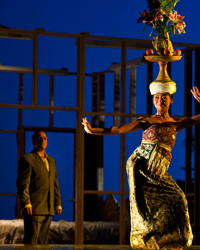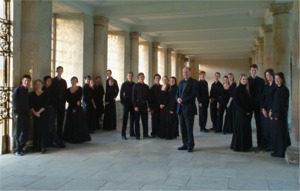 San Francisco Performances launched its 30th anniversary season yesterday evening with a recital by the great American baritone Thomas Hampson. Hampson is currently touring the US on a join project with The Library of Congress – Song of America – aimed at celebrating the history of song in this country and highlighting the library’s expansive collection of scores. Hampson’s repertoire encompasses music from the 1700s to the present day. Concert programs on the current tour (the second since the original iteration of the project in 2005-2006) feature Psalm settings and hymns, folksongs, cowboy songs, war songs and spirituals.
San Francisco Performances launched its 30th anniversary season yesterday evening with a recital by the great American baritone Thomas Hampson. Hampson is currently touring the US on a join project with The Library of Congress – Song of America – aimed at celebrating the history of song in this country and highlighting the library’s expansive collection of scores. Hampson’s repertoire encompasses music from the 1700s to the present day. Concert programs on the current tour (the second since the original iteration of the project in 2005-2006) feature Psalm settings and hymns, folksongs, cowboy songs, war songs and spirituals.
Hampson looks like the quintessential American Hero on stage — the sort of character that a Civil War era songwriter might dream of as the subject of a famous war ballad. With his stature and square-cut jaw (not to mention patriotic interests!) he reminds me strongly of the 1960s cartoon character, Roger Ramjet.
My favorite parts of last night’s program were newly commissioned works by Michael Tilson Thomas and John Corigliano (both of them lush and freewheeling works in which the singer and pianist collaborate as equals) and Hampson’s crowd-pleasing and emotional rendition of Shenandoah. Leonard Bernstein, Aaron Copland, and Charles Ives all made appearances as well as songs penned by lesser-known composers, including Harry T. Burleigh, Arthur Farwell, and Elinor Remick Warren.
Hampson’s Song of America tour continues at Los Angeles’ Dorothy Chandler Pavilion on October 3.
In other news of 30th anniversaries, Beach Blanket Babylon leading lady, Val Diamond, is retiring after 30 years in the show. Congratulations to Val.

 I had the privilege of catching an hour or so of mezzo-soprano Stephanie Blythe’s masterclass at the
I had the privilege of catching an hour or so of mezzo-soprano Stephanie Blythe’s masterclass at the  As I walked out of the press screening of Richard Linklater’s excellent new film about Orson Welles and the build-up to his landmark 1937 Mercury Theatre adaptation of Shakespeare’s Julius Caesar last night, it struck me that as engrossing as Linklater’s film is — and it is indeed worth seeing for the quality of the performances, the slick storytelling and the shabbily endearing 1930s New York aesthetic — in one respect it’s just like pretty much all of the films that are made these days about the world of the stage: It paints it in a twee and comedic light.
As I walked out of the press screening of Richard Linklater’s excellent new film about Orson Welles and the build-up to his landmark 1937 Mercury Theatre adaptation of Shakespeare’s Julius Caesar last night, it struck me that as engrossing as Linklater’s film is — and it is indeed worth seeing for the quality of the performances, the slick storytelling and the shabbily endearing 1930s New York aesthetic — in one respect it’s just like pretty much all of the films that are made these days about the world of the stage: It paints it in a twee and comedic light.








